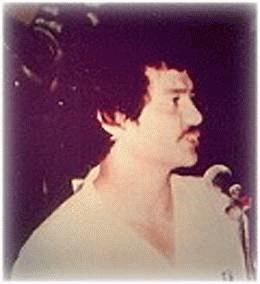On March 8, 1991, a King County Superior Court jury finds the former president of the Alaska Cannery Workers Union Local 37, Constantine "Tony" Baruso (1928-2008) of Tacoma, guilty of aggravated first-degree murder in the assassination of reformist union officer Gene Viernes (1951-1981). Baruso is acquitted of a similar charge in the death of Silme Domingo (1952-1981), another reformist union officer killed at the same time.
Not Enough Evidence
On June 1, 1981, Gene Viernes and Silme Domingo were gunned down at the headquarters of the Alaska Cannery Workers Union Local 37, International Longshoremen's and Warehousemen's Union, in Seattle's Pioneer Square. Viernes was the union dispatcher and Domingo was the secretary treasurer.
Viernes was killed instantly, but Domingo lived long enough to identify his assailants -- members of a Filipino gang known as Tulisan (Bandits), "a bunch of thugs" (Santos, 145). Gang members had been bribing their way into Alaska cannery jobs to work as dealers for gambling games, "the second biggest business in the canneries" (Santos, 143).
Fortunado "Tony" Dictado (the gang leader), Ben Guloy, and Jimmy Ramil were found guilty of aggravated first-degree murder and sentenced to life in prison without parole. The murder weapon was a 45-caliber Ingram Mac 10 submachine gun and was found in a trash bin -- it belonged to president of Local 37, Tony Baruso.
Baruso had risen though the ranks to president, a power position in Seattle's Filipino community. He had also served as president of the Filipino Community of Seattle and in 1970 lost a bid for the 37th District legislative seat. But Local 37 was "a mini-Mafia. There were instances of power struggles, payoffs, graft, assaults, and murders" (Santos, 31). Those who wanted union reform, including Vice President David Della, held the other key offices.
In the Viernes and Domingo murders, there was not enough evidence to charge Baruso. He did testify at the trial of the three men who were arrested and eventually sentenced, but he refused to answer questions more than 200 times, pleading the Fifth Amendment. Nevertheless, he was recalled as Local 37's president, and Terri Mast, Domingo's widow, took over the post. Baruso was also charged and convicted of embezzling Local 37 funds and was sentenced to three years in prison for that offense.
The Civil Trial
On September 14, 1982, the families of Viernes and Domingo filed a wrongful death civil suit in federal court against, among others, Baruso; Philippine president Ferdinand Marcos (1912-1989) and his wife, Imelda (b. 1929); and the FBI and CIA. Various challenges delayed the trial until late 1989, and the trial opened a couple of months after Marcos died.
Baruso, from the same province as Marcos, had been a friend and supporter. Viernes and Domingo, in addition to their fellow reformists in Local 37, had been vocal opponents of the dictator, especially after Marcos declared martial law in the Philippines in 1972. Seattle's Filipino community was split between pro- and anti-Marcos forces.
The families' lawyers argued that the assassinations had been ordered by Marcos and arranged through his intelligence and dirty-tricks network in the United States. They linked a check for $15,000 from a San Francisco front company to Baruso -- for a "special security project" -- and claimed that Baruso paid Dictado $5,000 to carry out the murders, keeping $10,000 for himself (Santos, 148). After an 18-day trial, the jury awarded the families $32.5 million, according to the Seattle Post-Intelligencer. The final sum was less, but was sealed.
Finally Convicted
Armed with the new evidence revealed in the civil case, King County prosecutors charged Baruso with the Viernes and Domingo murders in 1991. Baruso spent four months in the King County jail, held in lieu of $150,000 bond.
The prosecutors said Baruso wanted Viernes and Domingo dead because they were jeopardizing his power and the proceeds from gambling in the canneries, as well as because the two opposed Marcos. The prosecutors claimed that Baruso paid for the killings with money from Marcos, as revealed in the civil suit. But jurors concluded there wasn't enough evidence to support the Marcos connection; they decided that Viernes was the main target because he wouldn't dispatch Tulisan gang members to the canneries. After a two-week trial, Baruso was convicted of aggravated first-degree murder in the death of Viernes and was sentenced to life without parole.
Baruso died on November 14, 2008, of natural causes in Stafford Creek Corrections Center near Aberdeen. He was 80.

